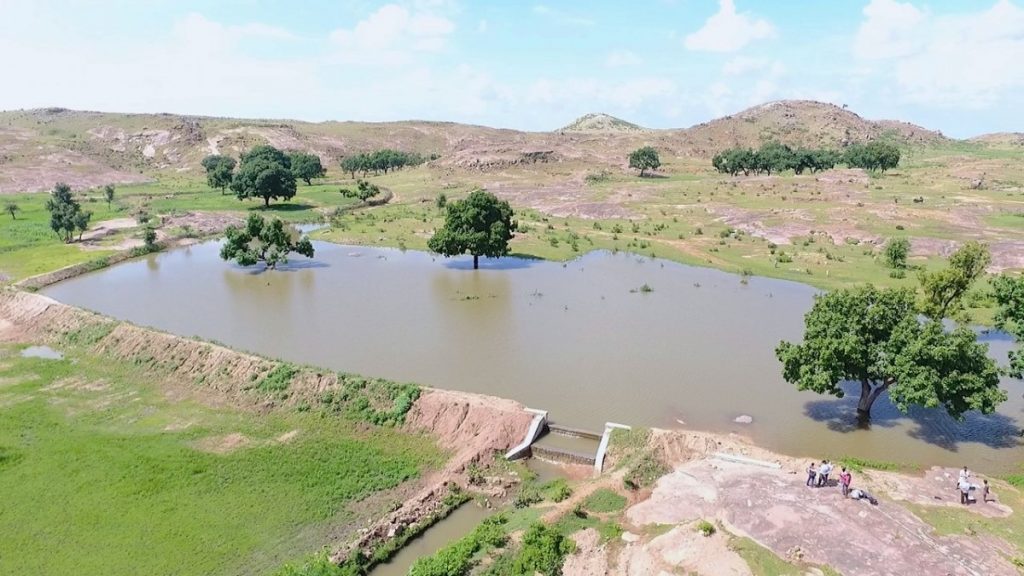A five year study of two degraded watersheds in the hilly, semi-arid region of Bundelkhand, central India demonstrated the advantages of restoring defunct haveli’s to store monsoon rains to replenish groundwater. Traditionally a haveli is an earthen rainwater harvesting tank, which acts as a reservoir during the monsoon (June to September), and after draining they are used for crop cultivation during the post-monsoon (October to February). By facilitating groundwater recharge the system ensures water security for households, livestock and agriculture. Farmers maintained their havelis together for hundreds of years, but many have now fallen into disrepair and even after a good monsoon, more than 80% of open wells soon run dry.
Researchers targeted one of the two watersheds for rejuvenation, first restoring a defunct haveli to service and upgrading its earthen wall with a concrete core for improved storage and longevity. plus other low-cost rainwater harvesting structures – check dams along drainage lines, and systems of contouring and bunds in farmers’ fields – along with tree planting and crop management demonstration. The second watershed, similar in all other respects, served as an experimental control.
The rainwater harvesting structures, which added up to 100,000 cubic meters of new storage capacity, significantly enhanced groundwater recharge by reducing surface runoff from an average 250mm a year to 150mm a year. The difference was very noticeable to every member of the community: well water levels stood 2–5 metres higher than in the control watershed.

